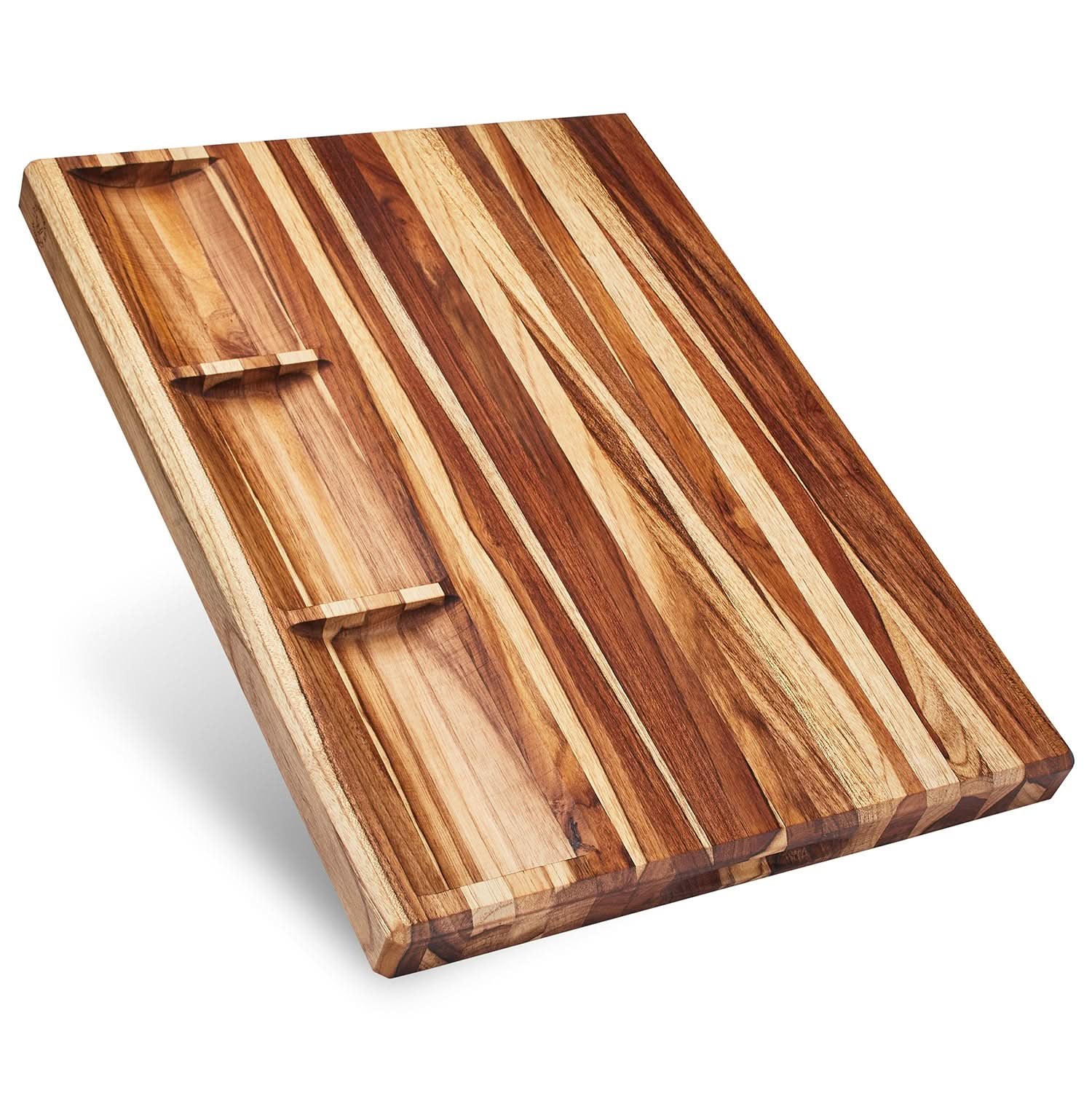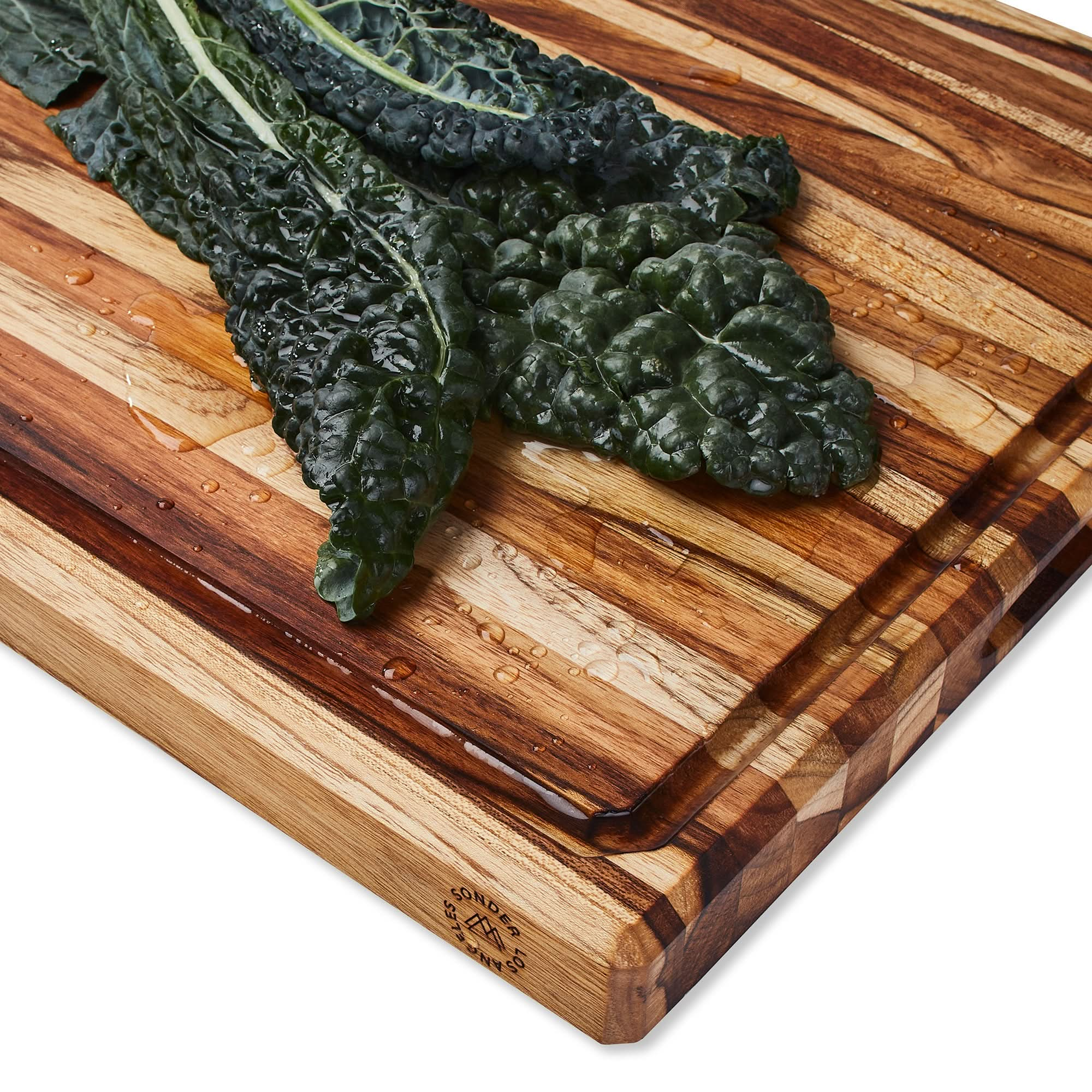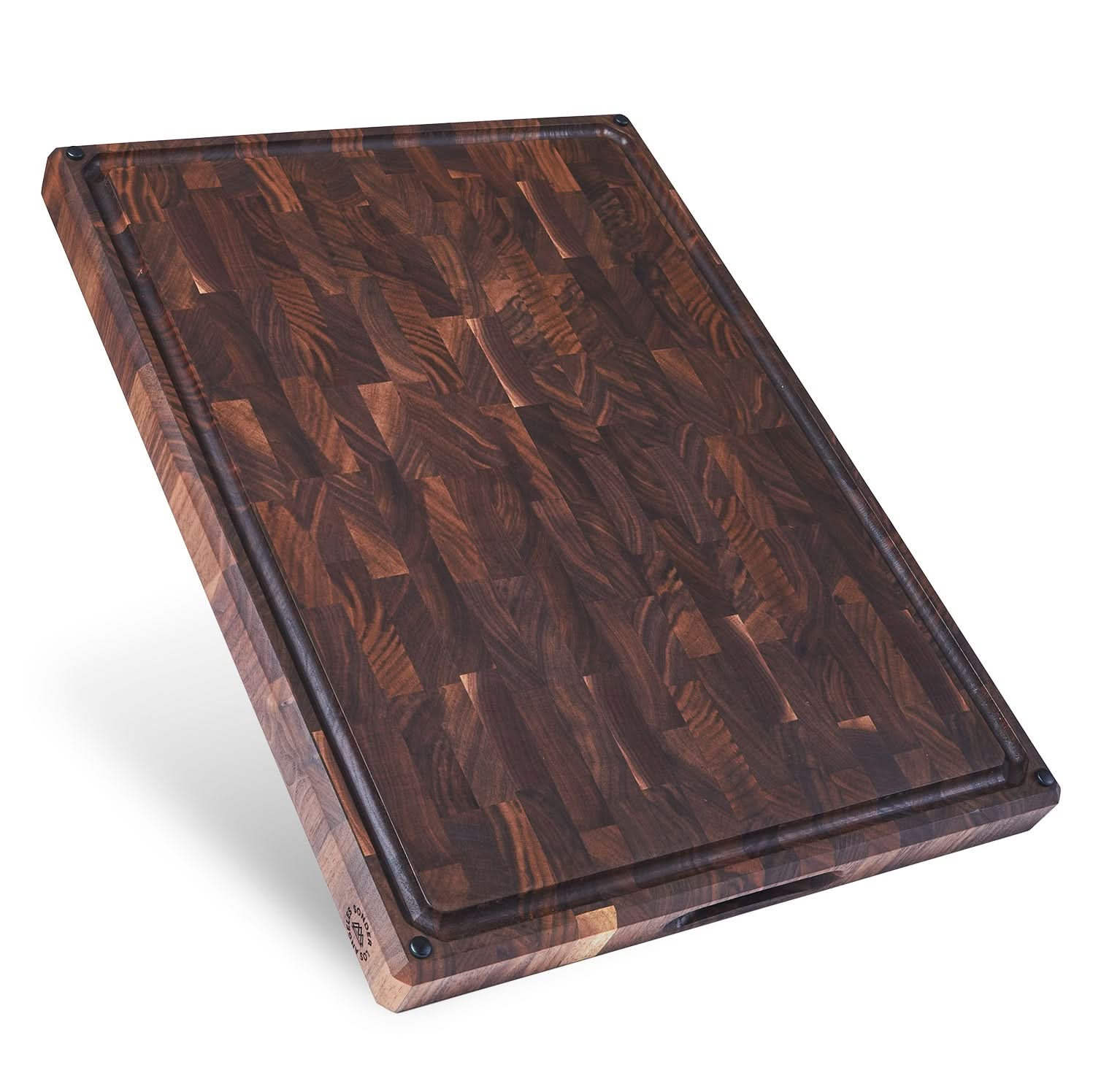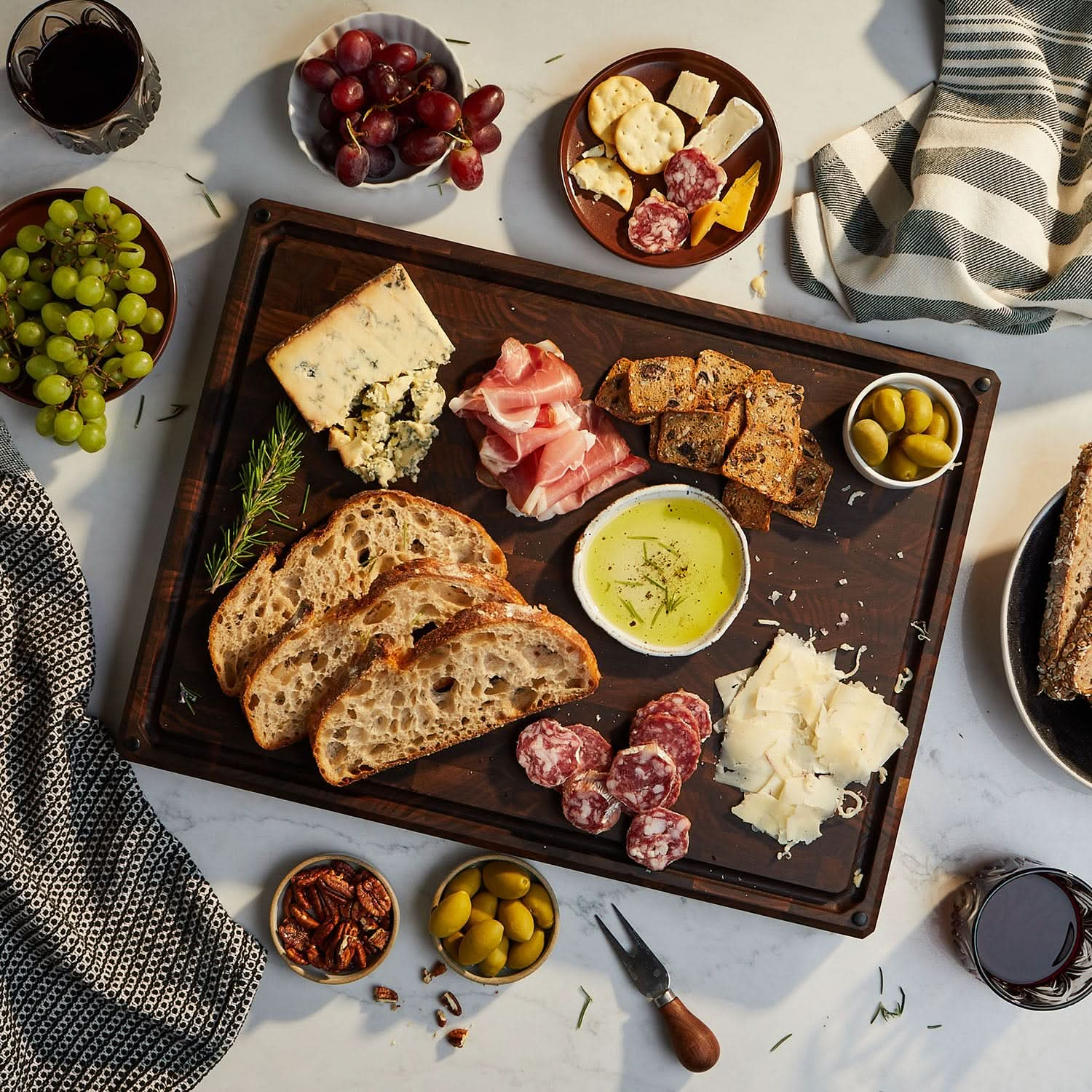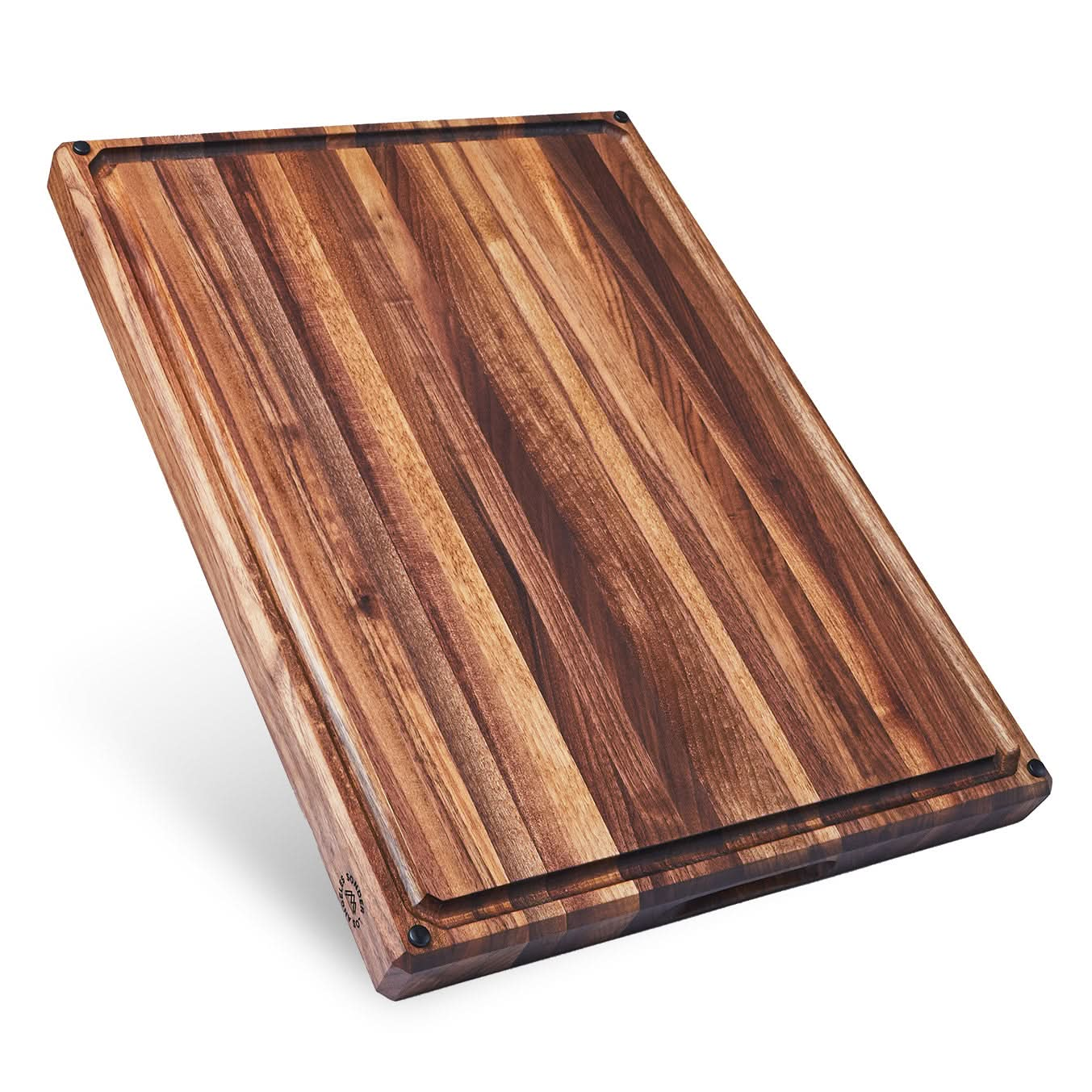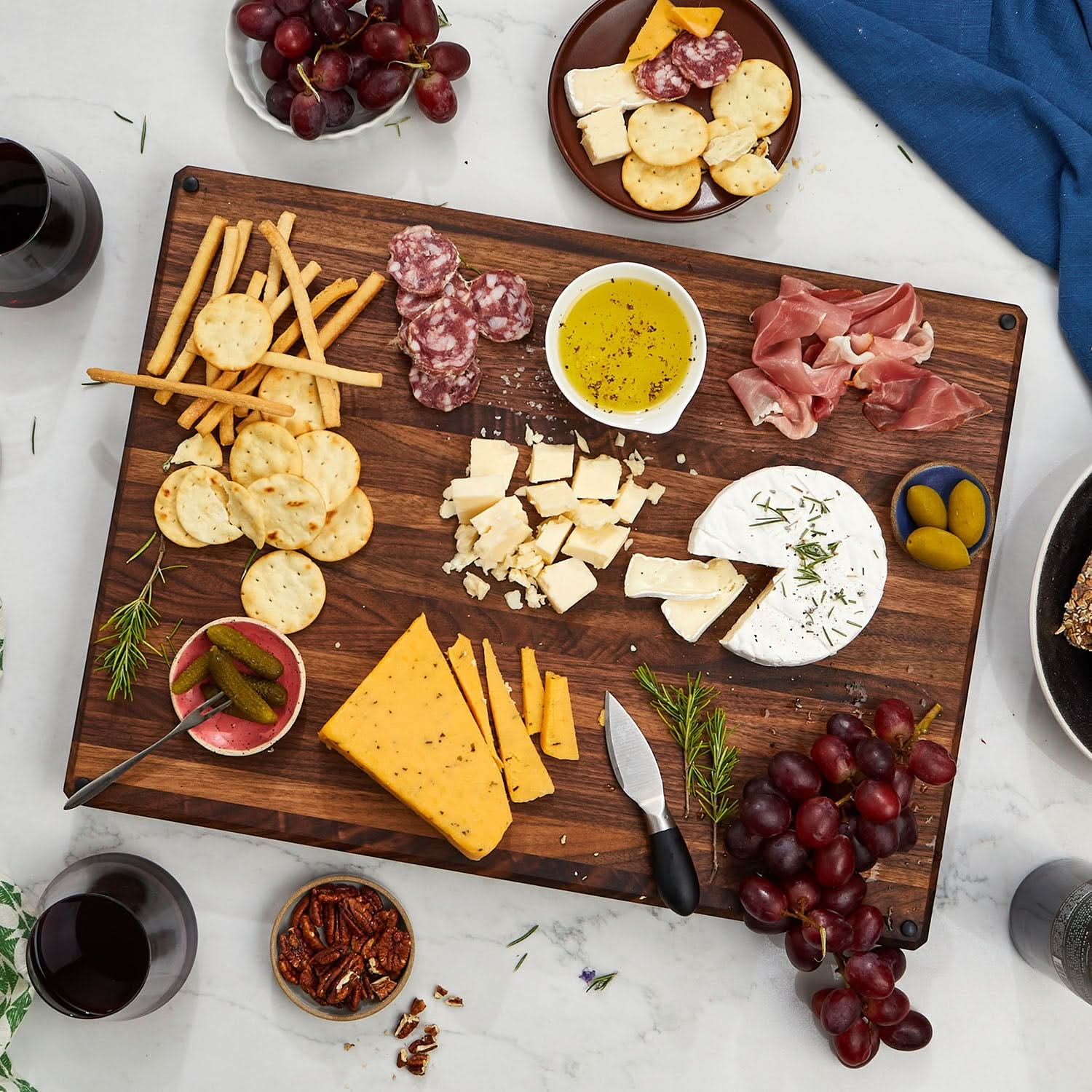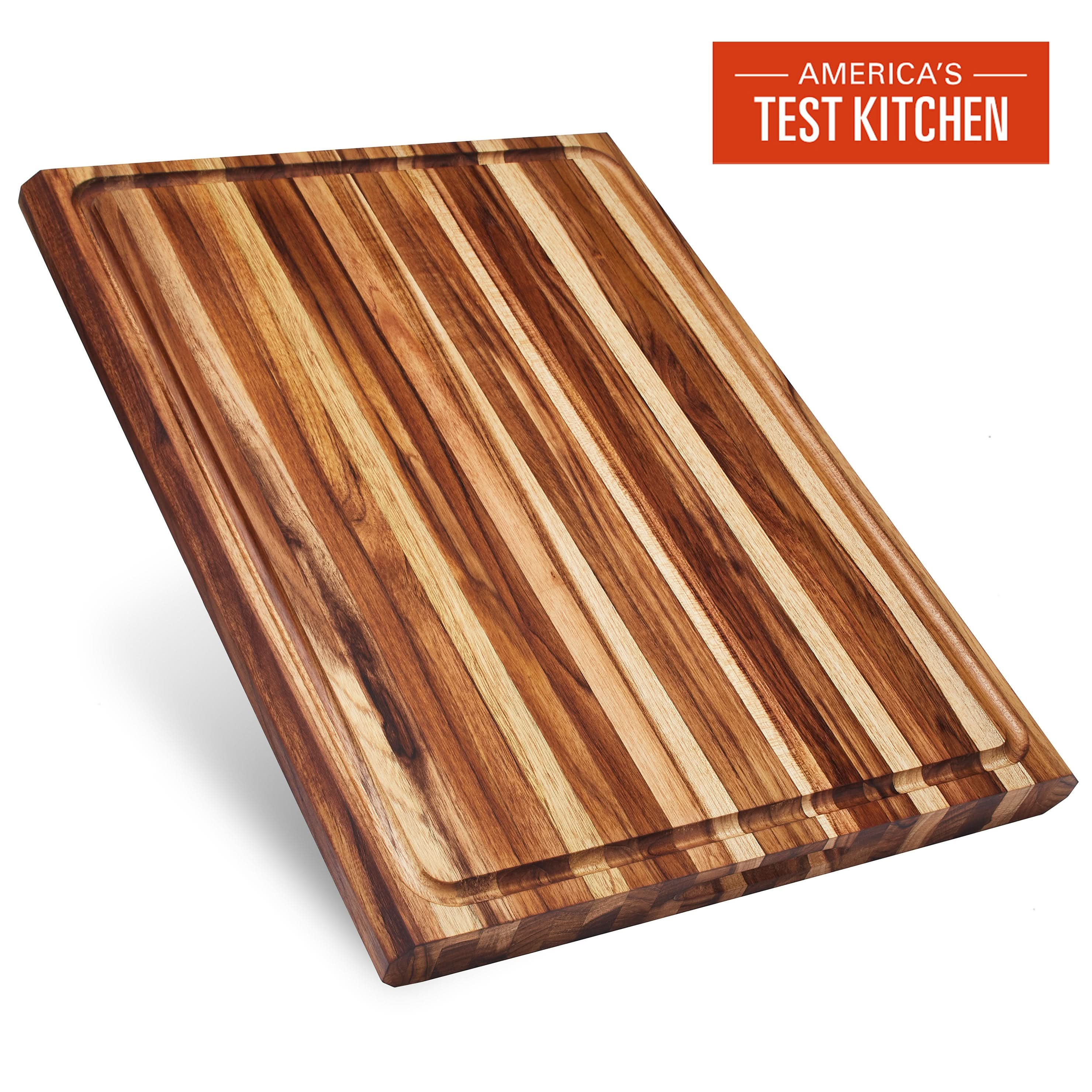
BBQ Boards Built To Handle Your Biggest Cuts of Meat
Whether you’re carving a whole turkey, a perfectly smoked pork shoulder, or a pile of juicy ribs, these boards are up for the task. Juice grooves with up to 5 oz capacity keep counters clean, while wide, stable surfaces give you the room to work without juggling space.
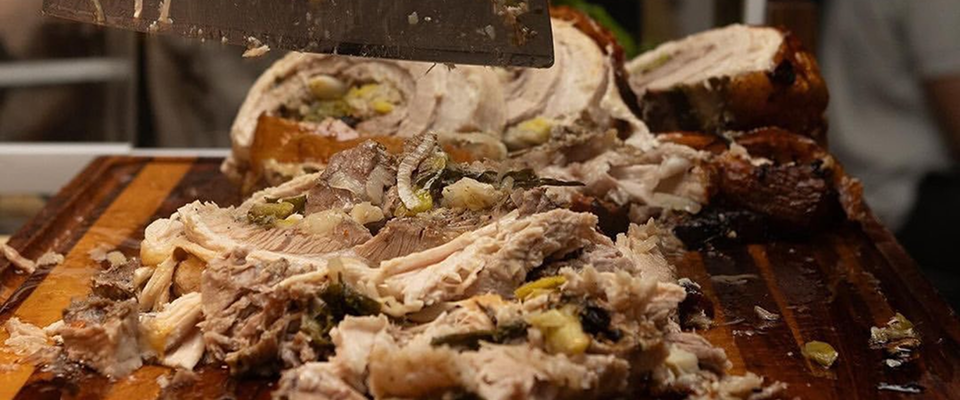
Our Largest Cutting Boards for Food Preparation
Ranging from 20x15” to an impressive 23x17”, these are the boards you break out when the grill is hot, the smoker’s rolling, and the guest list is long. Perfectly sized to handle briskets, multiple racks of ribs, and Tomahawks, your Traeger, Big Green Egg, or Kamado Joe cookout will never be the same.
Filters
Frequently Asked Questions about BBQ Cutting Boards
Well, wood, of course! Durable, resistant to bacteria, and look good while getting the job done. We recommend looking for boards with juice grooves and weight, as these are ideal for meat.
You sure can. Wooden cutting boards have natural antibacterial properties and contain oils that help fight bacteria.
Warm soapy water is all that is required to clean and sanitize your board between uses. Be sure to use mild dish soap—harsh soaps with alcohol (like Dawn Powerwash) can strip the wood’s natural oils, causing it to dry out. As long as the board is properly washed and oiled every 3 to 4 weeks, the oil will create a protective layer across the surface of the board, which, along with the wood's natural antibacterial properties, will keep your board perfectly safe and prevent bacterial growth before it can start.
For an extra boost, add some white vinegar or lemon juice to the board and rinse. Just be sure to follow with a very thorough oiling after the board is dry. These will help sanitize, but will also strip the wood of its natural oils, so they need to be replenished.
Maple for sure. But all the wood cutting boards we carry, including teak, walnut, and acacia, do a great job of being antimicrobial, too.
Yes, this isn’t a step you ever want to skip, even if you’re only using your board for display. How often you should oil your board depends on the wood type, but most boards require oiling at least every 3 weeks to prevent drying out, which can lead to warping and cracking.

